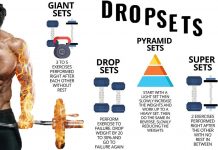🔥REVERSE FLYS: HAND POSITION

📍The rear delt can often be an area of neglect because of how it is positioned and people tend to favor motions that are in front or to the side of you. The posterior deltoid is crucial for shoulder integrity and reducing the potential for injury.
[wp_ad_camp_2]
⠀
📍There are two hand positions which are common with the reverse fly. When having your hand faced down (prone) and holding the machine handles, you internally rotate at the shoulder. When having the hand in a neutral position grasping the handles, your shoulder will be externally rotated.

⠀
📍Research
In a research study looking at the effect of hand position during the use of the reverse fly machine, they found that a neutral hand position had a significantly greater posterior deltoid activation when compared to a prone hand position. However, this difference was not great in magnitude. This begs the questions. Is it even worth having a neutral grip just to target the posterior delt? Will doing this hand position translate to athletic performance? It may or may not make a difference. It will ultimately come down to preference and what feels comfortable.
[wp_ad_camp_4]
⠀
The infraspinatus muscle did have a moderately greater activation using a neutral grip compared to a prone hand position. This may translate to a more meaningful exercise. So if your goal is to target more infraspinatus, then this should be the exercise of choice.
⠀
📍Practical Applications
It will depend on what’s more comfortable and if you want to target more of the infraspinatus. If you wan to target the infraspinatus, you will want to use a neutral grip.

















































